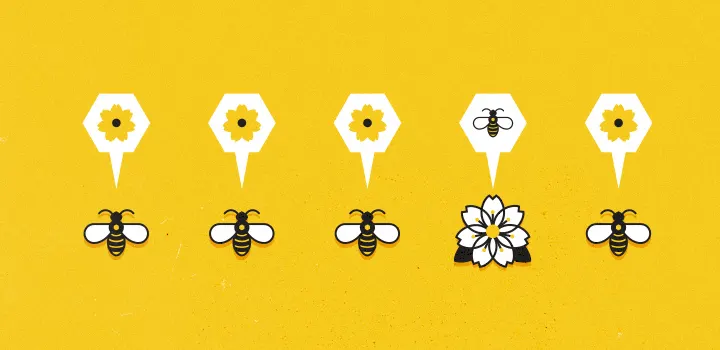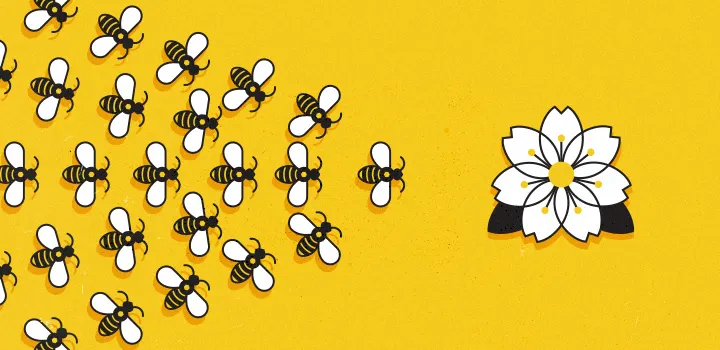Building Your Marketing Buzz
- 7 November 2016
- ByBig Cartel
- 11 mins. read

We know running a business is tough work. But launching a line of products isn't the end of the road: you need to tell people all about it.
You've already done the heavy lifting of building an online store filled with incredible items. You've calculated shipping, probably filled out some paperwork, and now you're ready to sell millions. (Or maybe more like dozens, if your products are handmade.)
But how do you get interested shoppers into your store to actually buy your stuff? It's easier said than done, but a simple, to-do list style approach to getting your brand out in front of people will lead to results. It just takes time.
Why are you doing this?

Before we jump into specifics, we'd love to recommend some books. We know, marketing books, super lame, right? These books will help you out with a few things: your voice, your story, and why you do this. Having a better understanding of how and why you say things will help you be clear with your message.
Nicely Said by Nicole Fenton and Kate Kiefer Lee
All Marketers Tell Stories by Seth Godin
Start With Why by Simon Sinek
They're all quick, easy-to-read books that'll be well worth your time. While you're reading them and throughout your planning, try to remember why you're doing this. What's driving you to create? What problem do you want to solve? When you're marketing and talking to your customers, be sure to keep why you are doing this in mind, and always have that be a part of your conversation. Customers will feel your passion, and their interactions with your brand will be more meaningful in the long run. By telling a clear story in a way that people want to read, you're not only broadening your customer base, but you're creating loyal supporters.
People have enough stuff, but they don't have enough meaning. - Seth Godin
Once you've got a groundwork in place, set some goals. Why you do what you do, combined with what goals you want to achieve, will help you flesh out your strategy.
So let's say you're a photographer. Your goals are to hit 2,000 Instagram followers and sell 100 prints by the end of the year. If that's the case, it probably makes sense to spend a lot more time on Instagram, rather than posting up flyers around town. You should spend your time writing blog posts (and great product descriptions) that tell the stories behind the images you're selling, not buying ads on Facebook. Just being specific about what you're trying to do will help you avoid wasting your time.
Know your strengths
If you've had good experiences at craft fairs or community markets, take your show on the road and sign up for more events. Come prepared with an email sign up sheet at your booth to collect email addresses from fans of your work. That gives you the opportunity to turn them into them into regular customers after the fair is over. Share stories, announce new products, and offer discount codes through your newsletter and you'll be well on your way to growing your army of followers.
Do you sell well at brick & mortar stores, but find yourself struggling to build an online audience? Build your shop out to include a wholesale order option, or open another shop just for wholesale accounts, so retail stores can re-order products from you more easily.
Whatever it is, take an honest look at what gets you results, and what you enjoy doing. There's no one-size-fits-all business advice, so it's up to you to recognize where to channel your energy.
Get social

Unless you're the next Banksy, your brand should have a presence on at least a few social media platforms like Facebook, Instagram, Twitter, Snapchat, Pinterest, and probably a blog too. This is your chance to connect with people outside of local events or a retail space, and it's how you build a loyal following. Yes, even out of mom and dad.
When people follow you on a social network, they're saying: "Hey, I like your style, and I want to see more of what you're up to." Don't leave them hanging by posting once every three weeks and never responding to comments. Hook them with your unique story and perspective, so when you run a new sale, they're purchasing and telling their friends.
It can be intimidating to try to stay on top of all of these mediums, but think of it as an investment in your business. And if you're really bad at staying on task, try scheduling a few minutes each day to spend on one of these services. Ideally, you shouldn't let comments and questions linger for more than 24 hours, but if you really need to pace yourself, try this:
Day 1 - Share a photo or video to Instagram to show off a new product you're working on. Narrate your afternoon of work in an Instagram story or on Snapchat.
Day 2 - Spend 20 minutes (or so) writing a blog post about what you shared on Instagram or Snapchat. It could be about the process of making your products, what sparked the idea, or a new skill you picked up while learning how to make it.
Day 3 - Take a few minutes to go on Facebook and Twitter to link to your blog post and respond to any new comments. If you've got the budget and you're so inclined, you can buy some advertising to boost your post on your social network of choice.
Day 4 - Check back in on Facebook and Twitter for comments or questions and be sure to reply.
Day 5 - Take 15-20 minutes to curate your Pinterest or tumblr page - don't forget to share an image from your blog post or other shots of your work. If this is where your people hang out, interact with the community through comments and re-pins or reblogs.
What you share on social media is up to you, but it shouldn't stray far from the earlier point about why you do this. That's what develops your voice and builds a cohesive brand. When what you're sharing is part of your DNA, you don't have to pretend to be genuine.
Consider all options
As great as it can be to build a community of followers on Facebook, it might not be enough. Sometimes you have to offer more to seal the deal or to reach new eyeballs. Here are some ideas.
Sales. Offer discounts to drive sales and reward loyal customers. Don't do it too often though, you want to show you value your own product.
Collaborations. Share the workload with other artists or organizations. You'll increase the audience you both reach, and connect with like-minded people who have different skills. We've even done some of our own collaborations.
Emails. Send a regular email to people who've opted in to hear from you. And keep it simple. Talk about new products, where they can buy your stuff, email-only sales and promotions, upcoming events, and more that they can't get anywhere else.
Events. Check out industry trade shows and festivals in your area to see how you can be involved. Sign up as a sponsor or vendor to expand your audience. It works for Choonimals. Talk to people at parties and tell them about what you're doing. Hand out flyers at events, hang posters around town, teach a class about your craft at a local library - your opportunities are endless. For the talkers in the crowd, this one's for you.
Advertising. Does advertising makes sense for you? If you're an indie business, there's a strong chance it doesn't. A little elbow grease and time spent connecting with people on a human level can take you places. But if you're short on time and have the budget, consider dipping your toes in the water with a small amount of advertising on Facebook or Twitter (or on your favorite podcast) to see how it increases your reach and impacts your bottom line.
More content. Videos and lookbooks are great ways to add some extra value to your site and generate interest in your products. For advice on creating your own lookbook, check out our free online Skillshare class.
Ask for help

Don't be too proud to ask for help. An important part of being a successful business owner is knowing when to bring in reinforcements.
Are you not so great at the humblebrag? Enlist the help of a more outgoing friend to be your voice and tell your story. Chances are they love what you're doing and can tell your story to the world.
Are blog posts and email newsletters intimidating? Ask your more literary friends to contribute posts and help create your brand's voice. You'd be surprised how many people you know who want freelance jobs or even just a fun topic to write about to help build their portfolio.
Organization got you down? Maybe a family member will keep your orders packed and shipped for some extra help around the house.
You won't know unless you ask.
It doesn't have to be hard
You don't have to be born with a megaphone in your hand to follow these tips. While the best marketers make it seem natural and easy, breaking your promotion down into smaller tasks is doable for any artist. The best know to play to their strengths and bring in help when they need it.
Above all else: Remember why you're doing this. Focus on sharing your unique story with your audience. Don't be afraid to write up a to-do list and check things off one by one. Soon enough you'll be building some buzz around your brand.
More resources
Read up on Social Media Tips for Creatives
Get your Primer on Search Engine Optimization
Take Melanie Abrantes' class on branding by creating a cohesive product line
Learn the benefits of Branding Yourself
Subscribe to author Seth Godin's daily newsletter on marketing and business
And read Seth Godin on What Marketers Are Getting Wrong
Dan Christofferson, Anna Brozek, and Andy Newman contributed to this guide.
7 November 2016
Words by:Big Cartel
Tags
- Share